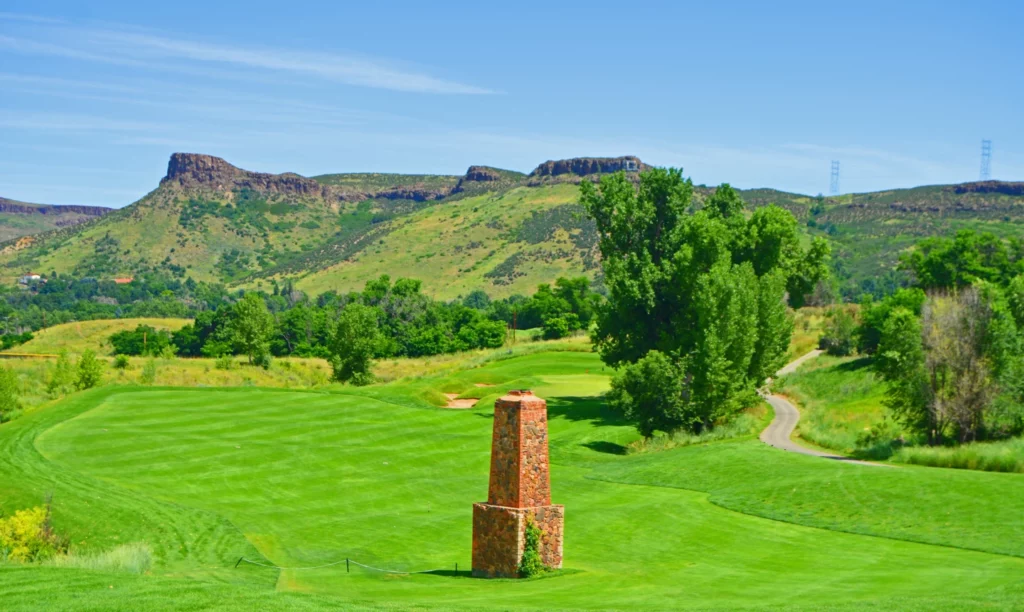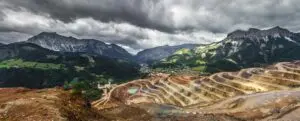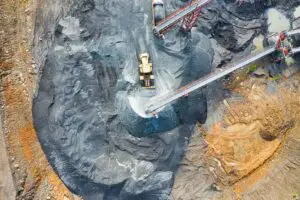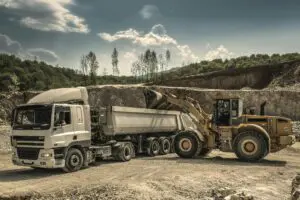Everything must come to an end but did you plan for it?
Economic conditions or operational requirements may require a mine to shut down temporarily, or the final closure of a mine may take place when the ore reserves have been depleted or are no longer economically feasible to mine.
Some conservative estimates suggest that there are around 1,000 mines going into closure within the next 10 years. But what are the costs associated with closing a mine?
Reclamation estimates vary considerably from mine to mine and even for the same mine site. Owners and regulators typically have differing perspectives and assumptions concerning what should be included in the closure cost estimate.
It may be reasonable for a mine owner to carry one value on its financial statements as to the expected cost of reclamation and post a bond for a higher value assuming the government will carry out the work.
Factors such as use of owner’s equipment versus contractor equipment, salvage value, and the interaction between the mine plan and reclamation plan will significantly influence the estimated cost.
Costmine had a chance to sit down with Krista Noyes (Mine Reclamation Cost Analyst) to discuss her experience with reclamation, their costs and how Costmine delivers solutions and data to this complex problem.
Costmine: Can you explain what reclamation is in the mining industry?
Krista Noyes: In the United States, if you were to build a mine on public land, land owned by the government, you have to put up a bond so that the government can clean up if you decide to walk away and just leave it for some reason. The government isn’t left with a debt that the taxpayers must take on. This is why mining companies need to do a cost estimate to reclaim the land to some state.
Mining companies have to return it to a useful state agreed upon in their permits. It could be that the plan is to turn it into a golf course, a park, or back to a natural state for wildlife. All this costs money and goes into the overall arithmetic that could make a new mine economic or not.
Costmine: Is it just one bond a mining company posts?
Krista Noyes: There may be bonds for different parts of an operation. You post the bond, but then you must reevaluate it. I think most mines are reevaluating it every year or every few years because your mine plan is going to change depending on economics and changing operations.
For example, if you decide to add a brownfield extension, a mill, a pad or a waste pile, you need to estimate how much it will cost you to properly reclaim the land and put up a bond.
Reclamation is something that starts at the beginning of a mine’s life. It’s a live exercise throughout the life of the mine. It’s not just something that you think of and complete at the end of the life of the mine. It is something that is a constant thought and process throughout the life of a mine in order to optimise costs.
Most mining companies, I should say most responsible mining companies, will reclaim as they go. They will look at their waste piles when they hit capacity, and say that we’ve got equipment on site, and this guy doesn’t have anything to do today, so let’s have him work on reclamation projects.
Costmine: Do mining companies reclaim as they go because it’s more cost effective?
Krista Noyes: You have staff on site already and the equipment’s already there. Especially if they are sitting idle. The real benefit of reclaiming as they go is that they get some of the bond back.
You can show that this portion of land was reclaimed and get the inspectors to come in and look at it. Then they can say, yeah, this is reclaimed properly.
In the Plan of Operations there are agreed upon standards and part of that bond will be released when the standards are met. At that time you can either apply to something else or reinvest it.
So there’s a time value in reclaiming as you go.
Costmine: Can you give us an idea of the scope of a reclamation? A mine can be massive with lots of infrastructure, pits, shafts, equipment that gets left behind.
Krista Noyes: The scope can be huge! Think about all of the things associated with a mine site. If it’s an underground mine you will have to close the portals and shafts. If it’s a surface mine you’ll have a pit to deal with. Waste piles and leach pads need to be re-sloped and covered. Buildings will need to be removed, pads and roads will need to be regraded, etc. Every last piece of your site needs to be considered.
Industry standards typically call for 3 feet of topsoil put on top of the non-acid generating material, and if the rock has acid generating potential then you may have to place a clay cap on it. Topsoil will be added and vegetation replanted. You also have to put in habitat for creatures to hide in and live out their natural ways.
Then there’s man made stuff that can be left behind safely and responsibly. This is typically items like foundations that can be buried, but most of the time you will take everything off the site and what could be left are water treatment facilities and pumps if you have to continue pumping water.
Costmine: The costs associated with reclamation are going to change with each unique environment where a mine is situated?
Krista Noyes: I have only worked at some sites in Nevada, but yes there will be different problems. If the mine is located in the Arctic, you will have some different issues come up. If you work in an environment with a lot of moisture or precipitation, the costs are going to be different and you need accurate cost data to account for these variables. From my experience, anything with water will be your big problem to solve.
Costmine: Are there certain process types or geologies or commodities that make reclamation costlier?
Krista Noyes: Any geology that produces acid will always be harder.
I once worked at a small oxide mine. We did not have a mill. We trucked our ore to a mill offsite. That site was closed, reclaimed and released from bonds within three years. Today you can’t even tell it was a mine site.
The variety of mining scenarios are almost limitless, that is why it is important to have the right data for your cost models.
Costmine: Can the land ever be used again for any other purposes or is it just kind of designated as reclaimed and don’t go there for a decade or two?
Krista Noyes: It really depends on where the mine was located and what is economically feasible. I have seen a variety of mines recovered in creative ways. There’s a former mining site in Wales that was turned into an underground trampoline park, in Pennsylvania, there’s one farming mushrooms underground, and there is one that has internet servers underground because of climate control.
These are just some examples. But there are a lot of parks you’ve probably been to that you didn’t know were mines or old quarries are often turned into like swimming holes.
Costmine: Is the public aware of this requirement for reclamation? Does the mining industry get any credit for this work?
Krista Noyes: Coal mining companies are really making an effort to present that their mines can be reused for hunting and nature. So you can see some of their progress returning lands for hunting. The land is being used by wildlife again.
They progressively reclaim the land as they move on from one bench to another. That includes regrading, replacing topsoil and replanting.
Costmine: Can you talk more about these cost inputs?
Krista Noyes: There are specific cost models for this. Costmine’s Sherpa Reclamation software is organized by tasks. The user choses a task that needs an estimate, closing a waste pile for example. Then with some basic inputs about the size of the project and desired outcome, they can estimate the costs of earthwork, sitework, seeding, and monitoring, among other things.
It’s like reverse engineering really. Our software allows you to input many variables with the latest cost data.
One example of the granularity of costs that we track at Costmine is the cost of seed. When you get your permit to reclaim or to mine, the Bureau of Land Management (BLM) will tell you what seeds you need to meet their standards. There are very specific seed mixes which can be plugged into our Reclamation Cost Estimator.
It is not just seeds, for example if it’s in a forested area, the permit will specify a certain number and variety of trees. We have these costs in our reclamation cost estimator.
These are just a few of the possible costs, but they add up and the data is not readily available to the public. The Sherpa Reclamation Estimator allows you to look at multiple parameters all in one place?
Costmine: Why should companies be using our software?
Krista Noyes: Mining companies are using it so they can either reply back to the BLM’s work and defend their costs, or build their own estimates so they can start permitting. This is a unique case where you actually want a lot of stakeholders on the same page using the same models.
Ideally, if you want to keep your costs down, you need to plan ahead. You can say, well, I don’t want to build a waste pile that’s this size or with this waste in this location, because it will cost this much more to reclaim. You have to make some choices but you need to model the outcomes of those choices.
As a mining company executive, you might use our models to negotiate with the BLM. You might also use it to defend yourself to an insurance company or a bank, to justify how much you want to set aside. Companies are always going to try and keep that number low.
But that is the trick with cost estimation. You want to be honest and accurate to ensure you have enough money at the end to do the work right.
If you incorporate these costs earlier on, it will cost you less than you set aside in the reclamation bond because if the government has to come in and do the work, they are expecting that their costs are going to be higher. Their labour costs are going to be different and they’re assuming they have to lease equipment. When a mining company would already have the equipment on site.
If you plan it poorly and you spend more money on your bond, or you don’t reclaim as you go, you’re leaving that money on the table. I think underestimating the bond cost will be your biggest problem.
Imagine coming to the end of a mine’s life and you have not planned for closure. Now you’ve got a really big problem, a big expense you did not plan for or estimate.
Costmine: Thank you Krista for your time and insights.
About Sherpa Reclamation
Built on industry standard engineering estimating procedures from top minds in the field, like Scott Stebbins, combined with the robust and comprehensive dataset of the Mining Cost Service, SHERPA gives you the tools you need to quickly and accurately determine capital and operating costs for every aspect of your project across the entire lifespan of a mine.
Our models come complete with suggested values for all standard variables, but allow you to add your personal expertise by customising each item. Adjust for local conditions, modify values to run alternate scenarios, and output everything into a complete report for review and analysis.





















